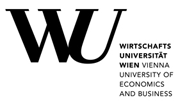Department of Economics Working Papers,
Vienna University of Economics and Business, Department of Economics
No 348: Flying to Mars and Venus - the gendered nature of in-work poverty in Europe
Anna Schwarz ()
Additional contact information
Anna Schwarz: Department of Economics, Vienna University of Economics and Business
Abstract: This paper addresses the invisibility of women in in-work poverty research by analyzing the Eurostat in-work poverty indicator in combination with a novel individualized in-work poverty indicator. The latter relies on individual income, but still accounts for the household in defining the poverty threshold. I show that men are more often in-work poor due to assumed sharing with other household members, while women are mostly individually poor, but lifted out of poverty on the household level. The latter is not captured by the Eurostat indicator. This seems to be driven by household dynamics. Living with children makes women more financially dependent on their partner- increases individualized in-work poverty-, which in turn increases the burden on men's income - increases Eurostat in-work poverty. This pattern is most prevalent in countries with a stronger gender division of labor. My results uncover the blind spots in in-work poverty measurement and additionally highlight the potential of using the individualized indicator to measure financial dependency within the household.
Keywords: poverty measurement, gender, intra-household inequality, in-work poverty
JEL-codes: I32; J16; O57; D13; D31 September 2023
Note: PDF Document
Full text files
WP348.pdf
Report problems with accessing this service to Sune Karlsson ().
RePEc:wiw:wiwwuw:wuwp348This page generated on 2025-09-20 04:36:37.

